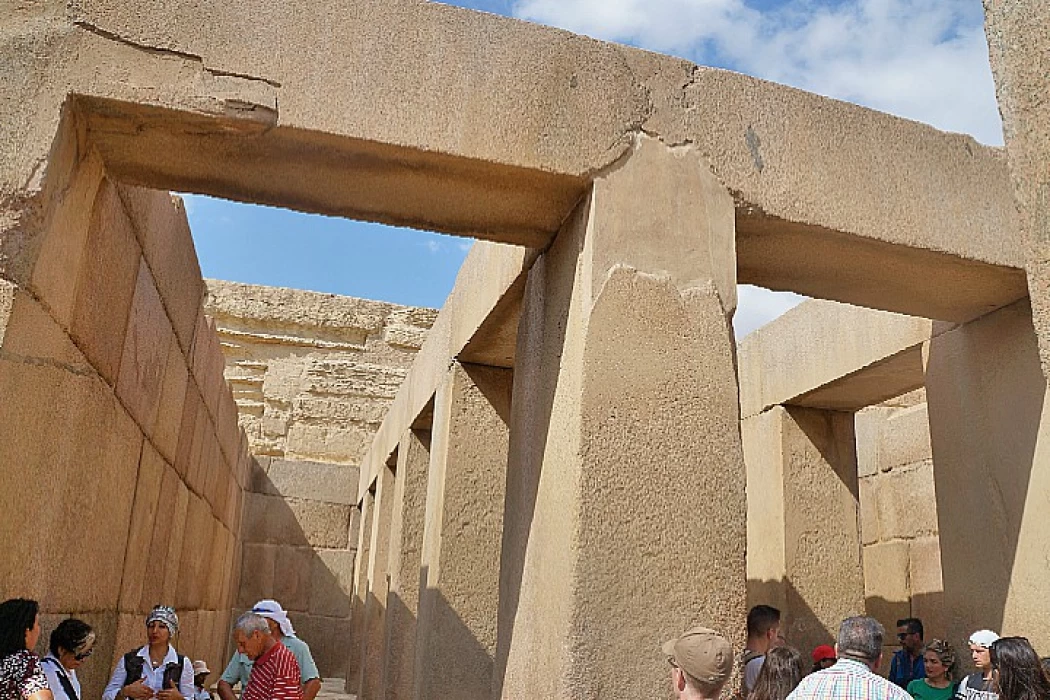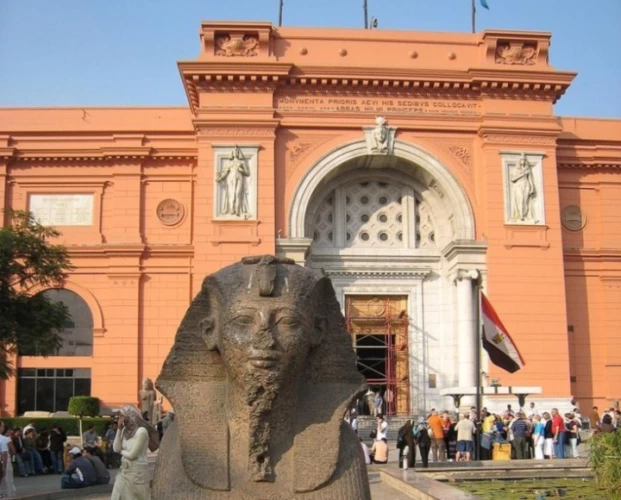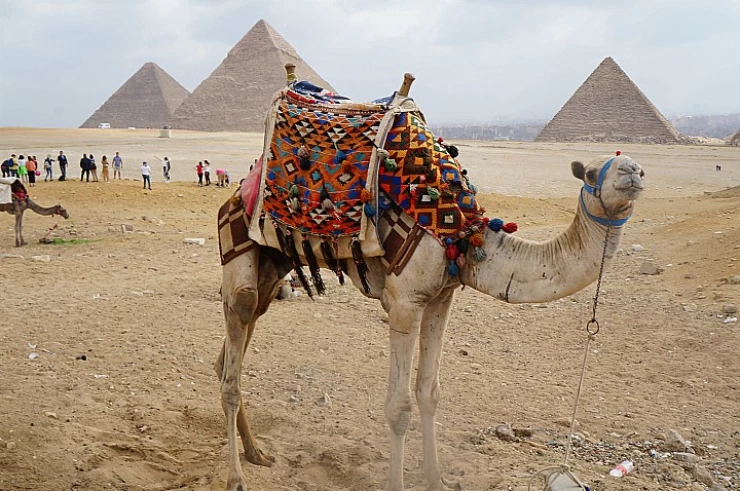
The Valley Temple of King Chephren
The best-preserved temples
The Valley Temple is considered the entrance to the pyramid group and is considered one of the complete pyramid temples that were written for immortality due to its architectural elegance and the richness of the materials used in it, and in front of the two entrances there were statues of sphinxes as lions to guard the temple. The use of these lions for the purpose of guarding the temples remained until the end of Pharaonic history and was engraved around the entrance to each of the entry doors with hieroglyphic writings with the names of the king and the village describing that he is beloved by all (mother of the universe) and (goddess of heaven) is located on the southern side of the Sphinx and the temple and the front of the temple is directed towards the east.
The entrance to the temple was previously through two entrances on the eastern facade, one on the north side and the other on the south, and the entrance was entered through the northern entrance. This slave was established in order to perform funeral rituals for the deceased king, such as cleansing the body, embalming, and reciting funeral prayers. The ritual of opening the mouth, which was performed after the completion of mummification and on the day of burial, was a magical ritual intended to enable the deceased to speak again and enjoy the offerings in the afterlife that he was about to start, which is more important than his first life on earth.
The temple was built with huge limestone stones, and its walls were covered with blocks of polished pinkish-red granite. Most of this granite cladding of the walls has been removed from the outside, while the granite cladding of the walls on the inside and the 16 granite columns are still in a good state of preservation The floor of the temple is made of alabaster stones The lobby is open to the sky at present, but it was roofed with granite blocks that were focused on these columns, and there were twenty-three statues of King (Khafre) that we can still see the places of their bases in the floor of the temple and the light was entering the temple through openings in the ceiling, the light of each opening shines on a statue.
Diorite statues of the king were found buried in a pit inside the temple, which is now buried, but its location is clear in the floor and surrounded by an iron fence, and the complete statue made of diorite is considered one of the greatest statues of the ancient state due to the beauty of its appearance and its survival in good condition until now, which is on display in the Egyptian Museum.
In the southwest corner of the lobby there is a corridor leading to the warehouses or perhaps the embalming rooms, while the northwest corner has a corridor leading to the back door of the temple, which in turn leads to the road up to the pyramid, and in the middle of the northern corridor on the north side of it there is a road that ascends to the roof of the temple, while on the south side there is a small room that seems to have been used as a room for the temple guard.


















